What's New
Displaying results 2611 - 2620 of 4914
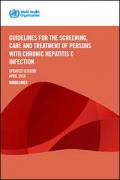
Resource | Guidelines,
The field of HCV therapeutics continues to evolve rapidly and, since the World Health Organization (WHO) issued its first Guidelines for the screening, care and treatment of persons with hepatitis C infection in 2014, several new medicines have been approved by at least one stringent regulatory authority. These medicines, called direct-acting antivirals (DAAs), are transforming the treatment of HCV, enabling regimens that can be administered orally, are of shorter duration (as short as eight weeks), result in cure rates higher than 90%, and are associated with fewer serious adverse events than the previous interferon- containing regimens. WHO is updating its hepatitis C treatment guidelines to provide recommendations for the use of these new medicines.
The objectives of these WHO guidelines are to provide updated evidence- based recommendations for the treatment of persons with hepatitis C infection using, where possible, all DAA-only combinations. The guidelines also provide recommendations on the preferred regimens based on a patient’s HCV genotype and clinical history, and assess the appropriateness of continued use of certain medicines. This document also includes existing recommendations on screening for HCV infection and care of persons infected with HCV that were first issued in 2014.
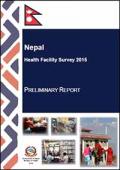
Resource | Publications,
This preliminary report presents provisional results on the availability and preparedness of health facilities to provide maternal and child health, family planning, and other services based on information collected from the different types of health facilities. This information will help health program managers and policy makers prioritize interventions that will enhance the provision of quality health services. A comprehensive report on the survey findings will be published later in 2016. The data in the final report are not expected to differ substantially from the findings presented in this preliminary report; however, the results presented here should be regarded as provisional and may be subject to change.
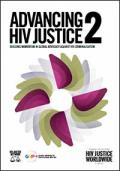
Resource | Publications,
The enactment and enforcement of HIV-specific criminal laws – or even the threat of their enforcement – fuels the fires of stigma. It reinforces the idea that HIV is shameful, that it is a disgraceful contamination. And by reinforcing stigma, HIV criminalisation makes it more difficult for those at risk of HIV to access testing and prevention. It also makes it more difficult for those living with the virus to talk openly about it, and to be tested, treated and supported.
The Advancing HIV Justice reports show how far we have come. This second iteration of these important progress reports documents how the movement against these laws and prosecutions – burgeoning just a decade ago – is gaining strength. It is achieving some heartening outcomes. Laws have been repealed, modernised or struck down across the globe – from Australia to the United States, Kenya to Switzerland.

Resource | Fact Sheets,
In April 2016, there were 772 new HIV Ab seropositive individuals reported to the HIV/AIDS & ART Registry of the Philippines. This was 38% higher compared to the same period last year (560) [Figure 1]. Eighty-four percent of the cases were asymptomatic at the time of reporting.
Most (94%) were male. The median age was 28 years old (age range: 7 years-65 years). More than half belong to the 25-34 year age group while 29% were youth aged 15-24 years.
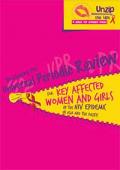
Resource | Guidelines,
Through this guide, Unzip the Lips aims to promote the engagement of Key Affected Women and Girls, (KAWG) community networks and NGOs with the Universal Periodic Review (UPR) process. The goal is to strengthen advocacy for the needs and rights of these groups, and to ensure that their sexual and reproductive health and rights are respected, protected and fulfilled.
In this guide, you will learn about the role of the UPR process in advancing sexual and reproductive health and rights. You will also learn about why and how to engage with this important human rights review mechanism.
This guide provides concrete information regarding State obligations under the UPR process; it also explains your rights and how to claim them at a national level.
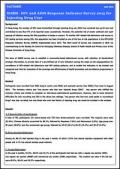
Resource | Fact Sheets,
In Hong Kong, the number of HIV cases transmitted through injecting drug use (IDU) has remained low up till now and contributed to less than 5% of all reported cases cumulatively. However, the potential risk of cluster outbreak and rapid upsurge of infection among the IDU population is always a concern. To monitor HIV-related risk behaviours and access to HIV testing services among IDU, this population has been included as one of the four at-risk populations in the HIV/AIDS Response Indicator Survey (HARiS) implemented since 2013. The third round of survey was conducted in 2015 via commissioning to the Stanley Ho Centre for Emerging Infectious Disease, School of Public Health and Primary Care of the Chinese University of Hong Kong.
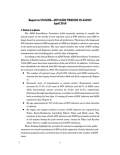
Resource | Publications,
The AIDS Surveillance Committee holds quarterly meeting to compile the annual report on the trends of new reported cases of HIV infection and AIDS in Japan based on anonymous reports from all prefectures. Physicians who diagnosed HIV infection (without AIDS symptoms) or AIDS are obliged to submit a case report to the prefectural government. The case report includes the result of HIV testing, major symptoms and diagnosis, gender, age, nationality, residential area, possible transmission route including place, and the date of diagnosis.

Resource | Presentations,
Global Consultation on the Programmatic Management of Latent Tuberculosis Infection
Date: 27-28 April 2016
Venue: Hotel President, Seoul, Republic of Korea
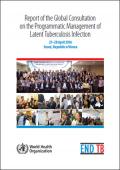
Resource | Publications,
The Global TB Programme of WHO in collaboration with the Republic of Korea’s Centers for Disease Control and Prevention and International Tuberculosis Research Center organized a global consultation on the management of latent tuberculosis infection (LTBI) that was held during April 27–28, 2016, in Seoul, Republic of Korea.
The objective of the meeting was to present and discuss challenges to, opportunities for, and best practices on the programmatic management of LTBI, and to consider recommendations to facilitate its implementation in both high-burden and low-burden countries.

Resource | Publications,
Heads of State and Government and representatives of States and Governments assembled at the United Nations from 8 to 10 June 2016, reaffirm the commitment to end the AIDS epidemic by 2030 as the legacy to present and future generations, to ensure that we are on the Fast-Track to reach this target, and to seize the new opportunities provided by the 2030 Agenda for Sustainable Development to accelerate action and to recast our approach to AIDS given the potential of SDGs to accelerate joined-up and sustainable efforts to lead to the end of AIDS and we pledge to intensify efforts that will help to increase the life expectancy, quality of life, and dignity of all people living with, at risk of and affected by HIV.





